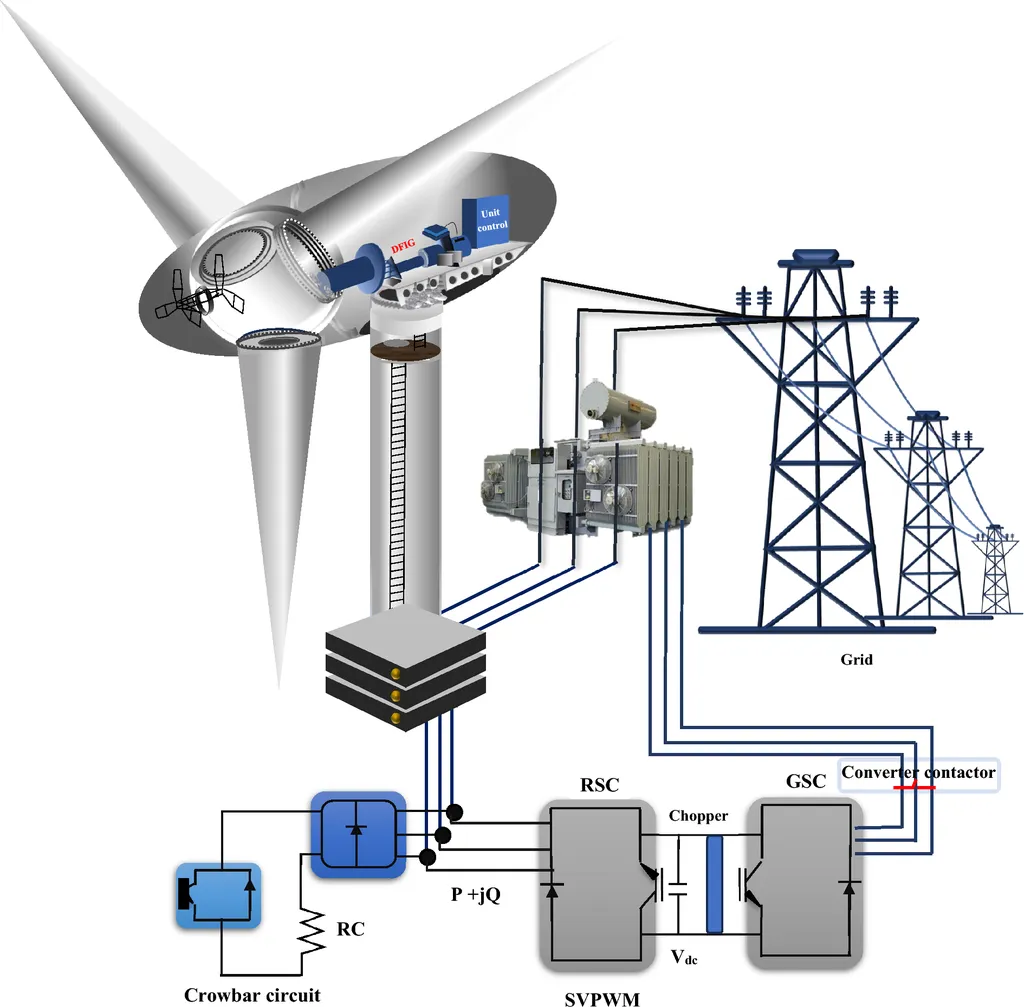In the quest to harness the vast potential of offshore wind energy, researchers have developed a novel strategy to enhance the stability and reliability of power transmission systems, particularly during grid faults. This breakthrough, published in the journal *Power Engineering and Technology*, could significantly impact the commercial viability and integration of offshore wind power into the broader energy grid.
At the heart of this research is Nianwen Xiang, a professor at the School of Electrical Engineering and Automation, Hefei University of Technology in China. Xiang and his team have focused on the challenges posed by flexible low-frequency transmission (FLFT) systems, which are increasingly being used to transmit power from offshore wind farms to the mainland grid. These systems, based on modular multilevel matrix converters (M3C), face significant risks during faults on the power frequency grid side, including power surpluses and stability issues.
The team’s innovative solution involves a fault ride-through strategy that employs an improved voltage-dropping method. This method is designed to manage the transient processes that occur during grid faults, ensuring that the wind turbines can continue to operate safely. “The key was to develop a control strategy that could handle the complexities of the M3C converters and the varying types of faults,” Xiang explained. “By doing so, we can prevent overspeed conditions in the wind turbines and ensure the stability of the entire system.”
One of the most compelling aspects of this research is its practical application. The proposed strategy has been validated using a detailed model of a wind turbine connected via a FLFT system, built in PSCAD/EMTDC software. The simulations demonstrated that the strategy effectively maintains the average voltage of the M3C sub-module capacitors within safe limits, even during system faults. This is a critical advancement, as it directly addresses one of the major hurdles in the widespread adoption of offshore wind power.
The commercial implications of this research are substantial. As the energy sector continues to shift towards renewable sources, the ability to reliably transmit power from offshore wind farms to the grid is paramount. The fault ride-through strategy developed by Xiang and his team could play a pivotal role in this transition, ensuring that offshore wind power remains a stable and dependable source of energy.
Moreover, this research highlights the importance of innovative control strategies in the integration of renewable energy sources into the grid. As Xiang noted, “The future of energy lies in our ability to manage and control these complex systems effectively.” By addressing the challenges posed by FLFT systems, this research paves the way for more robust and efficient offshore wind power transmission, ultimately contributing to a more sustainable energy future.
In the broader context, this work underscores the need for continued investment in research and development to overcome the technical challenges associated with renewable energy integration. As the energy sector evolves, such innovations will be crucial in shaping a more resilient and sustainable energy landscape.

